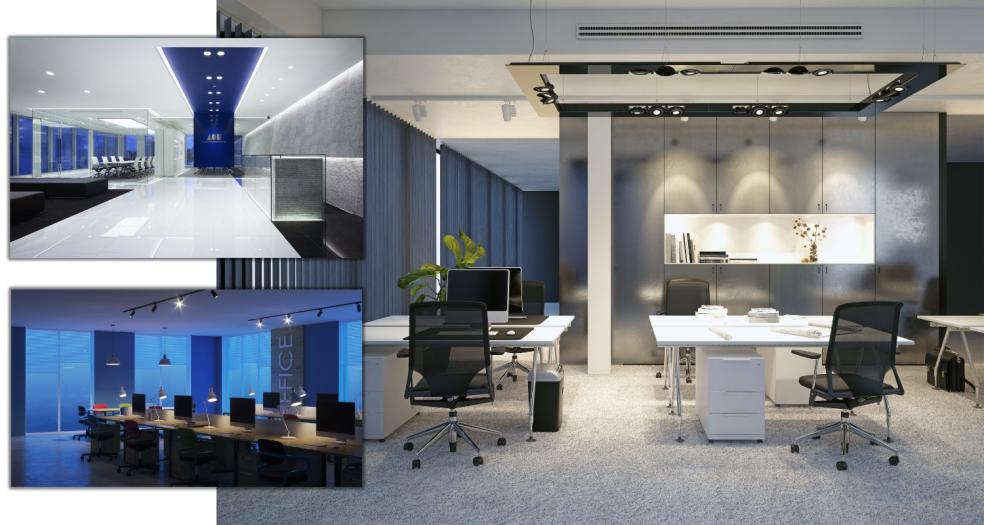
Commercial LED Lighting: Affordable Workspace Illumination
Light up your commercial workspace without breaking the bank. Explore cost-effective commercial LED lighting options and discover long-term savings for your commercial or industrial setting.
1. Introduction
Great illumination in your workplace is significant in today's hectic work society. It enhances your productivity and uplifts your mood as well. However, you don't need to invest much money for excellent illumination. This manual will demonstrate practical and cost-effective methods to illuminate your workspace. We'll look at lights that save energy and smart ways to set up your space so it's well-lit and comfy. Let's explore the simple things that can make your workspace bright and not too expensive.
2. Importance of Proper Lighting in Commercial and Industrial Spaces
Correct illumination in business and industrial areas is a crucial element that greatly affects business proceedings, employee health, and overall efficiency. Suitable illumination improves the visual setting and enhances safety, energy conservation, and employee effectiveness. This article will explore why proper lighting, facilitated by cutting-edge commercial led lighting, is indispensable in commercial and industrial settings.
a. Enhanced Visibility and Safety:
- Proper lighting ensures adequate visibility, reducing the risk of accidents and injuries in industrial and commercial spaces.
- Well-lit areas contribute to better hazard identification, promoting a safer working environment for employees and visitors.
b. Increased Productivity:
- Adequate lighting positively influences employee mood, alertness, and overall well-being.
- Studies have shown that proper lighting can enhance focus and concentration, increasing workers' productivity.
c. Energy Efficiency and Cost Savings:
- Energy-efficient solutions for commercial spaces, such as LED technology, provide better illumination and significantly save costs over time.
- Implementing smart lighting systems allows for better control over energy consumption, contributing to sustainability goals.
d. Regulatory Compliance:
- Many industries have specific lighting standards and regulations to ensure the health and safety of workers.
- Proper lighting design and implementation help businesses comply with these regulations, avoiding potential legal issues and fines.
e. Branding and Aesthetics:
- Proper lighting enhances the aesthetic appeal of commercial spaces, contributing to a positive brand image.
- Thoughtful lighting design can create a welcoming atmosphere for customers, clients, and employees, influencing their perception of the business.
f. Task Performance and Accuracy:
- Different tasks require different lighting conditions for optimal performance.
- Proper lighting design considers the specific needs of various tasks, ensuring that employees can perform their duties accurately and efficiently.
g. Employee Well-being:
- Inadequate lighting can lead to eyestrain, headaches, and employee discomfort.
- Proper lighting supports the overall well-being of workers, reducing the risk of health issues associated with poor lighting conditions.
h. Adaptability and Flexibility:
- Commercial and industrial spaces often have dynamic needs that may change daily.
- Implementing adaptable lighting solutions allows businesses to meet varying requirements, from focused task lighting to ambient illumination for different activities.
The importance of proper lighting in commercial and industrial spaces cannot be overstated. From ensuring safety and compliance with regulations to enhancing productivity and employee well-being, well-thought-out lighting solutions contribute significantly to the success and sustainability of businesses. Investing in proper lighting not only addresses immediate concerns but also serves as a strategic decision that positively impacts the overall performance and image of the organisation.
3. Key Considerations for Commercial LED Lighting
a. Brightness and Color Temperature
Setting the right ambience involves selecting optimal brightness and colour temperature. Learn how to tailor lighting levels to specific tasks, promoting concentration and comfort. Discover the benefits of adjustable fixtures to cater to the dynamic needs of commercial spaces.
b. Energy Efficiency
Efficient lighting isn't just a cost-saving measure—it's an environmental responsibility. Explore the advantages of LED lighting, from long-term savings to lower maintenance requirements. Gain insights into implementing smart lighting systems that adapt to occupancy and natural light.
c. Flexibility and Adaptability
Commercial spaces often serve diverse purposes. Uncover the importance of flexible lighting solutions, allowing seamless adaptation to various activities within the same space. Find out how dimmers, sensors, and task lighting contribute to a versatile and adaptable lighting setup.
4. Industrial Lighting: A Comprehensive Guide
a. Types of Industrial Lighting Fixtures
Industrial settings demand specialised lighting fixtures. Understand the types available and how to match fixtures with specific tasks. Discover the efficiency of high-bay lighting for open areas and the precision of task lighting for detailed workstations.
b. Importance of Task Lighting
Precision is key in industrial environments. Explore the critical role of task lighting in reducing errors and improving overall efficiency. Implement task lighting strategically in areas where detailed work is conducted, enhancing safety and productivity.
c. Safety Considerations
Safety should always be a top priority in industrial spaces. Learn how adequate lighting contributes to a secure work environment. Gain practical tips on illuminating emergency exits and high-risk areas and ensuring regular maintenance for optimal safety.
5. Commercial LED Lighting: The Future of Commercial and Industrial Illumination
a. Advantages of LED Lighting
Step into the future with LED technology. Uncover the myriad benefits, including energy efficiency, longevity, and reduced environmental impact. Learn how industrial light fixtures align with sustainability goals and discover the positive impact on your business.
b. Implementation Tips for Businesses
Transitioning to LED lighting requires strategic planning. Assess your current setup, create a phased plan, and explore retrofitting options. Consider seeking advice from lighting consultants for a tailored approach that maximises the benefits of LED technology.
6. Cost-Effective Commercial LED Lighting Solutions
a. Long-Term Savings
While the upfront costs of energy-efficient lighting may seem daunting, the long-term savings are substantial. Calculate the potential benefits and understand the economic advantages over time. This section guides you in making an informed decision that balances initial investment with long-term gains.
b. Government Incentives and Rebates
Governments worldwide offer incentives and rebates for businesses adopting energy-efficient lighting. Explore how these programs can offset initial costs and contribute to the overall affordability of your lighting solution. Get practical tips on researching, applying, and complying with eligibility criteria.
7. Conclusion
Choosing industrial electrical contractors in Cayman and the best lighting for your commercial or industrial space is multifaceted. By prioritising efficiency, safety, and adaptability, you'll create an environment that illuminates your workspace and propels your business toward success and well-being.









